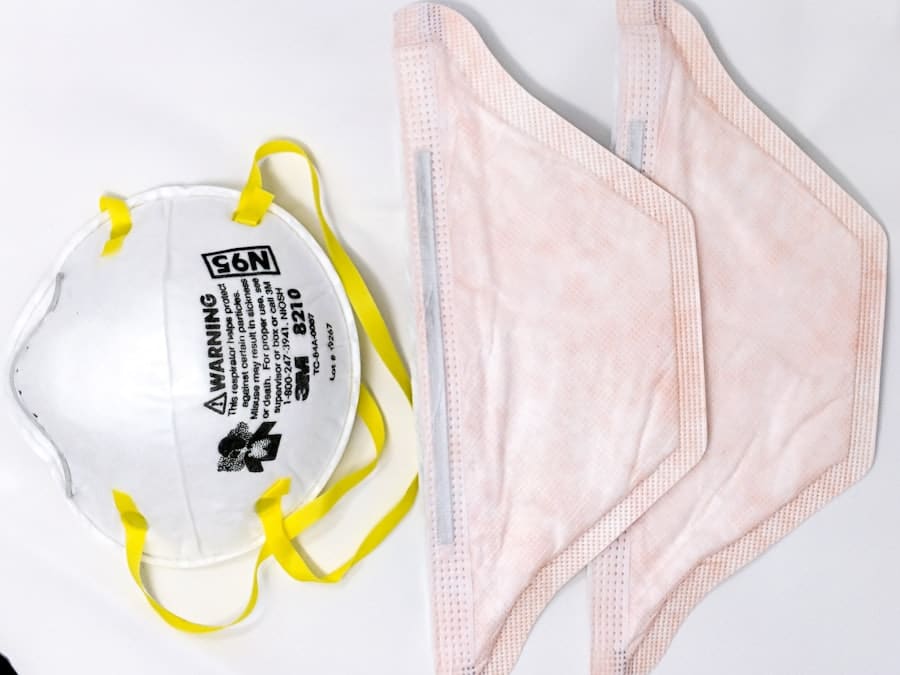Hormonal health is a critical aspect of overall well-being, influencing everything from mood and energy levels to reproductive health and metabolic functions. The intricate balance of hormones in the body can be easily disrupted by various factors, including stress, diet, lifestyle choices, and environmental influences. As awareness of hormonal health has grown, so too has the demand for effective monitoring solutions that empower individuals to take charge of their health.
This is where wearable technology comes into play, offering innovative ways to track hormonal fluctuations and gain insights into personal health. Wearable devices have evolved significantly over the past decade, transitioning from simple fitness trackers to sophisticated health monitoring tools. These devices can now provide real-time data on various physiological parameters, including heart rate, sleep patterns, and even hormonal levels.
By integrating advanced sensors and algorithms, wearables can help users understand their hormonal health better and make informed decisions about their lifestyle and healthcare. This article delves into the types of wearables available for hormonal health monitoring, their benefits, and how they can assist in tracking menstrual cycles, fertility, and hormonal imbalances.
Key Takeaways
- Wearable devices offer innovative ways to monitor hormonal health by tracking key indicators like menstrual cycles and fertility.
- Different types of wearables, including smartwatches and specialized sensors, provide personalized hormonal data.
- Using wearables can improve reproductive health management and early detection of hormonal imbalances.
- Wearables assist in accurately tracking menstrual cycles, aiding in fertility planning and symptom management.
- Future trends point to more advanced, non-invasive hormonal monitoring technologies with enhanced accuracy and user experience.
Types of Wearables for Hormonal Health Monitoring
The landscape of wearables designed for hormonal health monitoring is diverse, encompassing a range of devices tailored to different needs and preferences. Smartwatches are among the most popular options, equipped with features that allow users to monitor various health metrics. Many smartwatches now include sensors that can track heart rate variability, skin temperature, and even blood oxygen levels, all of which can provide indirect insights into hormonal changes.
For instance, fluctuations in heart rate variability can indicate stress levels, which are closely linked to cortisol production. In addition to smartwatches, specialized wearables have emerged that focus specifically on hormonal health. For example, some companies have developed patches or rings that continuously monitor hormone levels through sweat or interstitial fluid.
These devices can provide real-time data on hormones such as estrogen and progesterone, offering a more direct approach to understanding hormonal fluctuations. Furthermore, mobile applications often accompany these wearables, allowing users to log symptoms, track cycles, and receive personalized insights based on their data.
Benefits of Using Wearables for Hormonal Health Monitoring

The integration of wearables into hormonal health monitoring offers numerous advantages that can significantly enhance an individual’s understanding of their body. One of the primary benefits is the ability to collect continuous data over time. Unlike traditional methods of tracking hormonal health, which may rely on periodic blood tests or subjective symptom logging, wearables provide a more comprehensive view of hormonal fluctuations.
This continuous monitoring can help identify patterns that may not be apparent through sporadic assessments. Moreover, wearables often come equipped with advanced analytics capabilities. Many devices utilize machine learning algorithms to analyze collected data and provide actionable insights.
For instance, a wearable might identify correlations between sleep quality and hormone levels, prompting users to adjust their sleep habits for better hormonal balance. This data-driven approach empowers individuals to make informed lifestyle changes that can positively impact their hormonal health.
How Wearables Can Help in Tracking Menstrual Cycles
Menstrual cycle tracking is one of the most common applications of wearables in hormonal health monitoring. Many women use these devices to gain insights into their cycles, helping them understand their bodies better and manage symptoms associated with menstruation. Wearables can track key metrics such as cycle length, ovulation days, and symptoms like cramps or mood changes.
By analyzing this data over time, users can identify patterns that may indicate irregularities or potential health issues. For example, a woman may notice that her cycle length varies significantly from month to month. By using a wearable device that tracks her cycle alongside other physiological metrics like heart rate and sleep patterns, she may discover that stress or lack of sleep correlates with these irregularities.
This information can be invaluable when discussing menstrual health with healthcare providers, as it provides concrete data that can inform diagnosis and treatment options.
The Role of Wearables in Monitoring Fertility and Reproductive Health
Fertility tracking is another critical area where wearables have made significant strides. Many women seeking to conceive use wearables to monitor ovulation and fertile windows more accurately. Devices equipped with temperature sensors can track basal body temperature (BBT), which typically rises after ovulation due to increased progesterone levels.
By consistently monitoring BBT alongside other metrics such as cervical mucus changes or hormone levels, women can pinpoint their most fertile days. Additionally, some wearables offer features that help users understand their reproductive health beyond just ovulation tracking. For instance, certain devices can analyze hormone levels related to fertility and provide insights into overall reproductive health.
This information can be particularly beneficial for women experiencing difficulties conceiving or those undergoing fertility treatments. By providing real-time data on hormonal fluctuations, wearables empower users to make informed decisions about their reproductive health.
Wearables for Monitoring Hormonal Imbalance and Health Conditions

Hormonal imbalances can manifest in various ways, leading to conditions such as polycystic ovary syndrome (PCOS), thyroid disorders, or menopause-related symptoms. Wearable technology has the potential to play a crucial role in monitoring these conditions by providing continuous data that can help identify imbalances early on. For instance, a wearable device might track fluctuations in energy levels, sleep quality, and mood changes—common indicators of hormonal imbalances.
Moreover, some advanced wearables are designed specifically for individuals with known hormonal disorders. These devices may include features tailored to monitor specific hormones relevant to the condition in question. For example, women with PCOS may benefit from wearables that track insulin levels alongside reproductive hormones, as insulin resistance is often a significant factor in this condition.
By providing comprehensive data on multiple hormonal pathways, wearables can facilitate more personalized treatment plans and lifestyle adjustments.
Considerations When Choosing a Wearable for Hormonal Health Monitoring
When selecting a wearable for hormonal health monitoring, several factors should be taken into account to ensure the device meets individual needs effectively. First and foremost is the accuracy of the sensors used in the device.
Another important consideration is the user interface and accompanying mobile application. A user-friendly interface allows individuals to easily navigate through their data and gain insights without feeling overwhelmed by complex information.
Additionally, features such as symptom logging and personalized recommendations can enhance the overall experience by providing tailored insights based on individual data patterns. Compatibility with other health apps or devices may also be beneficial for those who wish to integrate their hormonal health data with broader wellness tracking.
Future Developments and Trends in Wearables for Hormonal Health Tracking
The future of wearables for hormonal health monitoring is poised for exciting developments as technology continues to advance at a rapid pace. One emerging trend is the integration of artificial intelligence (AI) into wearable devices. AI algorithms can analyze vast amounts of data collected from users to identify trends and predict future hormonal fluctuations based on historical patterns.
This predictive capability could revolutionize how individuals manage their hormonal health by providing proactive recommendations rather than reactive solutions. Another promising area of development is the miniaturization of sensors and the enhancement of biosensing technologies. As these technologies become more sophisticated, we may see the emergence of non-invasive methods for tracking hormone levels in real-time without the need for blood draws or invasive procedures.
This could make hormonal health monitoring more accessible and convenient for a broader audience. Furthermore, as public awareness of hormonal health continues to grow, there will likely be an increase in demand for wearables specifically designed for various demographics—such as adolescents experiencing puberty or menopausal women seeking relief from symptoms. The customization of wearables to cater to specific life stages or conditions will enhance their effectiveness and relevance in promoting hormonal well-being across different populations.
In conclusion, the intersection of wearable technology and hormonal health monitoring presents a transformative opportunity for individuals seeking greater control over their well-being. As advancements continue in this field, we can expect wearables to become even more integral in managing hormonal health effectively and proactively.
In the quest to understand and improve hormonal health, wearables have emerged as a valuable tool for monitoring various physiological parameters. For those interested in the intersection of technology and health, a related article that explores the capabilities of modern devices is available at Unlock Your Potential with the Samsung Galaxy Book2 Pro. This article highlights how advanced technology can enhance productivity and well-being, which is essential for maintaining a balanced lifestyle.
FAQs
What are wearables that monitor hormonal health?
Wearables that monitor hormonal health are devices designed to track and analyze hormone levels or related physiological indicators in real-time or over a period. These devices often use sensors to measure biomarkers such as sweat, skin temperature, heart rate variability, or other signals that correlate with hormonal fluctuations.
How do hormonal health wearables work?
These wearables typically use biosensors to detect changes in the body that reflect hormone levels. For example, some devices analyze sweat composition, while others monitor physiological parameters influenced by hormones, such as basal body temperature or heart rate. The data collected is then processed and interpreted to provide insights into hormonal cycles or imbalances.
What hormones can these wearables monitor?
Commonly monitored hormones include cortisol (stress hormone), estrogen, progesterone, testosterone, and sometimes insulin or thyroid-related hormones. The specific hormones tracked depend on the device’s technology and intended use, such as fertility tracking, stress management, or metabolic health.
Who can benefit from using hormonal health wearables?
Individuals interested in understanding their hormonal cycles, such as women tracking menstrual health or fertility, people managing stress, or those with hormonal imbalances, can benefit. Healthcare providers may also use data from these devices to support diagnosis and treatment plans.
Are hormonal health wearables accurate?
The accuracy of these devices varies depending on the technology used and the hormone being measured. While some wearables provide useful trends and insights, they may not replace laboratory testing for precise hormone quantification. Users should consider wearables as complementary tools rather than definitive diagnostic devices.
Can wearables help with fertility tracking?
Yes, many hormonal health wearables are designed to assist with fertility tracking by monitoring hormones like estrogen and progesterone or physiological signs such as basal body temperature. These devices can help identify ovulation windows and fertile periods.
Are there any privacy concerns with hormonal health wearables?
As with any health monitoring device, privacy and data security are important considerations. Users should review the device’s data handling policies to ensure their hormonal health information is stored securely and shared only with consent.
Do hormonal health wearables require medical supervision?
While many wearables are designed for consumer use without direct medical supervision, it is advisable to consult healthcare professionals when interpreting results, especially if used for managing health conditions or making medical decisions.
What are the limitations of hormonal health wearables?
Limitations include potential inaccuracies, limited hormone types monitored, variability in individual physiology, and the inability to diagnose medical conditions independently. Environmental factors and device placement can also affect readings.
Where can I purchase hormonal health wearables?
These devices are available through various online retailers, specialized health technology stores, and sometimes directly from manufacturers. It is important to choose reputable brands and verify product reviews and certifications before purchasing.

